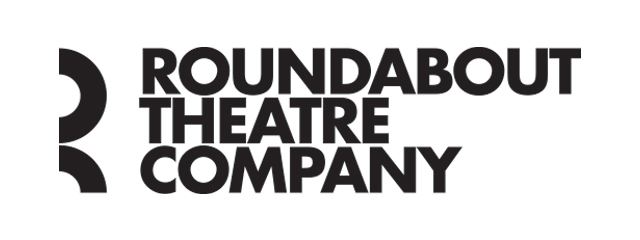Little Children Dream of God: Haitian Vodou
In Little Children Dream of God, as Sula begins her new life in America, she is haunted by memories about her past in Haiti. These include her connection to, and possible misuse of, Vodou practices. Sula is the daughter of a Manbo (a female Vodou priest) and is able to talk to spirits. Today, Haitian Vodou is practiced by millions of people, both within and outside of Haiti, yet it is widely misunderstood by outsiders.
Vodou in Haiti is not a religion and is not experienced in churches, nor does it have a central organization or set commandments. Rather, Vodou can be seen as a body of practices used to connect with spirits, deities, and deceased ancestors. It developed among the West African slaves who were first transported by the Spanish in the early 16th century. Passed on as an oral tradition, Vodou offered enslaved people a way to find a common identity and connect to their cultural heritage when so much had been taken away. Note that the Haitian spelling of "vodou" differs from American "voodoo"; the spellings signify that these are distinct practices, and New Orleans voodoo comes from a different tradition.
The Bwa Kayiman ceremony in August 1791 was an important event in Haiti's history. Slave leaders gathered together, sacrificed a black pig to an important spirit, and drank its blood as a pact to achieve their freedom. The ceremony launched the Revolution that ended slavery in Haiti in 1804 (almost 60 years before the emancipation of slaves in the United States) and established the country as the world's first black republic.
Vodou is practiced within communities called sosyetes or "houses." Each house may have its own unique ways to practice. Female priestesses are called Manbos, and male priests are Houngan. Many Haitians are Roman Catholic, and as a result of beginnings under Catholic colonizers, many Vodou activities are combined with Catholic rites.
Vodou altar with offerings to three nations
While it is not a religion, practicing Vodouisants do share some central beliefs: foremost is the concept of a single creator God, called Bondye. For Catholic practitioners, Bondye is equated with the Christian God. Most Vodou ceremonies begin with worship to Bondye. However, the true purpose is to serve (as opposed to worship) the Lwa (or Loa) -- the pantheon of spirits and lesser deities who co-exist with Bondye. Most of these spirits are connected to West Africa, but some relate to the indigenous Taino people who inhabited Haiti before Columbus. Some Haitian spirits are also served, including black leaders Toussaint L'Ouverture and Jean Jacques Dessalines. The proliferation and veneration of Lwa is similar to the various saints of the Catholic religion.
Vodouisants view bad events as a sign from the spiritual world that something is out of balance and needs to be corrected. By consulting with one of the Lwa, a person can try to understand the problem and address it. Many individuals identify with a specific Lwa whom they believe has chosen them. Lwa are served in ritual ceremonies and on altars in homes. Offerings might include food, pictures, flowers, lamps, weapons, bottles, and colorful fabrics that could attract the spirits. Lwa may be consulted for healing, advice, or divination, and they may communicate with their servants through dreams, as experienced by Sula, or temporary trance possessions.
Vodou ceremony in Jacmel, Haiti.
Trance possessions by Lwa are conducted by Houngans and Manbos during communal ceremonies. A spirit temporarily inhabits or "rides" a Vodouisant, using the body to eat, drink, dance, give advice, and participate in celebrations. The Lwa are almost always invited; possessions are temporary and can be dismissed by the Manbo. It is not known which participant a spirit will choose to ride, and the person is not considered superior within the community because of the possession.
The practice of animal sacrifice developed from the need to offer meat to some of the Lwa. Many Haitians still live in rural areas without access to supermarkets and processed meat products. It is typical to raise and slaughter animals for subsistence, and on occasion, to reserve animals for Vodou celebrations. Today, these sacrifices are rare, and when they do occur, animals are treated humanely and butchered by trained Manbos and Houngans with as little pain and suffering as possible.
Since the arrival of Columbus, Haitian people have endured a history fraught with turmoil, violence, corruption, and poverty. Haitians often had reason to be distrustful of government and police, and in rural areas, the Houngans and Manbos helped to maintain order for their people. President Francois "Papa Doc" Duvalier, who ruled Haiti from 1957 to 1971, associated himself with Vodou, but many other rulers in the 19th and 20th centuries made the practices illegal. After the Haitian earthquake in 2010, some critics alleged the disaster was a "punishment" for years of Vodou practices. Some Vodouisants were not allowed to bury their dead or hold memorials after the earthquake.
In the United States, KOSANBA, a scholarly association for the study of Haitian Vodou, was established at the Center for Black Studies at the University of California, Santa Barbara. Their declaration, formulated in 1997, asserts that "Vodou plays, and shall continue to play, a major role in the grand scheme of Haitian development and in the socio-economic, political, and cultural arenas. Development, when real and successful, always comes from the modernization of ancestral traditions, anchored in the rich cultural expressions of a people."
Watch a video about Vodou practice today.
Little Children Dream of God plays through April 5 at the Black Box Theatre. For more information and tickets, please visit our website.
.png)
|
.png)
|
Videos


